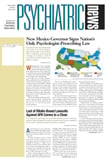Responding to a request from Congress to “prepare a plan to ensure that taxpayers’ interests are protected,” the National Institutes of Health (NIH) has issued a sweeping report, reviewing the institutes’ vision of taxpayers’ return on investment. In addition, the report calls for significant changes in the way the institutes manage grants to allow each institute to better track investments in research and any development of medical technology, drugs, or devices arising out of NIH-funded research.
The report of the congressional conference subcommittee on appropriations for the departments of Labor, Health and Human Services, and Education instructed the NIH to look at taxpayers’ investment in the development of new FDA-approved medications. More specifically, Congress asked NIH to prepare a list of drugs that had reached “blockbuster” status—defined as having reached $500 million in annual sales—and had NIH funding at some point in development.
NIH staffers identified 47 medications meeting the blockbuster definition during Fiscal 2001. Of those, three patented products, marketed under four brand names—epoetin alfa (Epogen/Amgen Inc. and Procrit/Ortho Biotech), filgrastim (Neupogen/Amgen Inc.), and paclitaxel (Taxol/Bristol-Myers Squibb)—were developed using NIH-funded technology.
Epoetin alfa, which is used to stimulate the growth of red blood cells, was developed by researchers at Columbia University with support from NIH grants. The university licensed the technology to Amgen and Johnson & Johnson (which markets it under its Ortho Biotech subsidiary).
Filgrastim is a growth factor and spurs the development of white blood cells. The medication, which is also used in cancer patients, was developed by researchers at Memorial Sloan-Kettering Cancer Center under NIH funding and was licensed to Amgen as well.
Paclitaxel is manufactured by BMS using a patented technology developed by Florida State University using NIH funds.
In addition, NIH has rights to an underlying, related technology that was developed through a direct collaboration between the institutes and BMS. The report noted that the institutes have received “tens of millions of dollars in royalties” from BMS between 1997 and 2000.
Although there has been significant discussion in recent years about taxpayers’ investment in NIH research—the institutes received a total of $20.3 billion in tax support for Fiscal 2001—it has been difficult to gauge any “return on investment” because record keeping had not been developed to track technology, drugs, or devices that were developed due to specific NIH funding.
Difficulties in tracking development, according to the report, were noted in four areas. First, technology developed in basic research laboratories is nascent by its very nature, requiring extensive further development. Second, not all technologies that arise from NIH funding lead to the development of a therapeutic drug. Third, the likelihood that a new compound, however promising, will actually reach the market is extremely low. And fourth, the time lag between the actual award of an NIH grant and any product that may reach the market is likely to occur “on average eight to 12 years after a license is signed, and a license offers no guarantee that a product will ever reach the market.”
Because it is not easy to cross-reference NIH grants and contracts that funded inventions with any patents or licenses attached to their final products, NIH will implement new procedures to allow accurate and timely tracking, according to the report.
Under the new plan, NIH grantees and contractors will now be required to report directly to the institutes the name, trademark, or other appropriate identifiers of a therapeutic product that was developed through NIH-funded research. This information will be compiled into a publicly available Web-based database.
“The availability of these data will make the research discovery and development process transparent,” the report said, and “as a result, it will permit the tracking of a drug’s technological pedigree and serve as a resource for the public.”
The report concluded that, although difficult to document, the American public has benefited greatly from its tax-based investment in research. In fact, the report estimated that the gains inherent to public health that might be attributable directly to institute-funded research are certainly many times the annual appropriation of tax-funded dollars.
The report, “A Plan to Ensure Taxpayers’ Interests Are Protected,” is posted on the Web at www.nih.gov/news/070101wyden.htm. ▪
